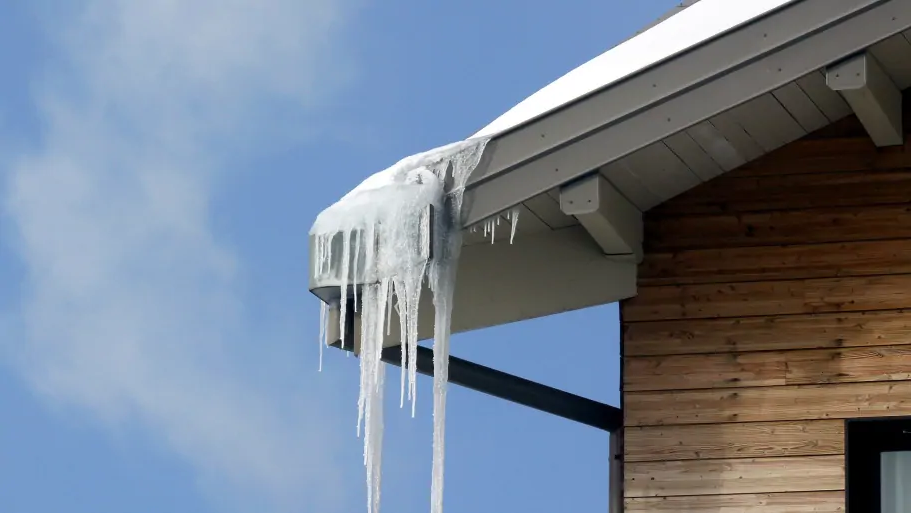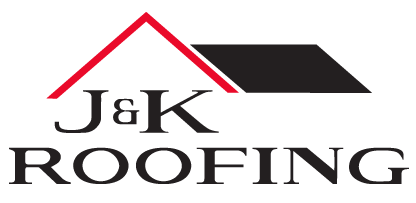
Common Colorado Winter Roofing Problems & How to Deal With Them
Winter in Colorado can be one of the most peaceful times of the year. There’s no better place to be when it comes to getting out and enjoying the fresh powder!
But if your home isn’t properly prepared for the season, you may find yourself dealing with an unfortunate mix of problems that could lead to substantial winter roof damage.
To help you know what problems to look for with your Colorado winter roof—and how to deal with them—here’s a list of some of the most common winter roofing problems in Colorado.
Common Winter Roofing Problems in Colorado
An ice dam is a ridge of ice that forms at the edge of a roof and prevents melting snow (water) from draining off the roof. The water that backs up behind the dam can leak into a home and cause damage to walls, ceilings, insulation and other areas.
Ice dams & Icicles
Ice dams and icicles are the result of varying roof temperatures. When areas of your roof have a range of different temperatures, snowfall melts in the warmer regions, flows to the roofs edge, and freezes, creating an ice dam or icicle.
The water that backs up behind the dam can leak into a home and cause damage to walls, ceilings, insulation and other areas.
Ice dams
When water flows down your roof and then freezes on the eaves, it creates an ice dam. The main cause of ice dams is poor ventilation in your attic, and they are bad news because they can damage your gutters, your roof, and your home’s interior. Ice dams can lead to leaks, and they can also potentially break away and fall to the ground, damaging your property or causing injuries.
Ice dams and icicles are the result of varying roof temperatures. When areas of your roof have a range of different temperatures, snowfall melts in the warmer regions, flows to the roofs edge, and freezes, creating an ice dam or icicle.
Ice dams are a build up of ice toward the edge of a roof. As the ice dam becomes larger, it can block the proper flow of water to your gutters, essentially creating a dam on your roof.
Ice dams are mainly caused by improper insulation and ventilation in your attic (link). They can cause damage to you gutters, your roof, and your home’s interior. Water damage is the biggest issue. The water that backs up behind the dam can leak into your home and cause damage to walls, ceilings, insulation and other areas.
Solution: The best solution for eliminating ice dams is preventative: properly ventilate and insulate your attic, and seal any areas where warm air may escape from your living space into the attic. If you’re dealing with ice dams during the winter, you can also try to melt them with calcium chloride ice melter. Be careful when trying to break apart an ice dam. Sharp tools and punctures can cause damage to your roof and shingles.
Here are additional in-depth tips on how to deal with ice dams.
Icicles
Similar to ice dams, the formation of icicles on your eaves and gutters is a common winter roofing problem in Colorado. Water running down your roof can freeze as it drips to the ground, creating the iconic icicle we’re all familiar with. Icicles can also form along your gutters if you have cracks and gaps in them.
Icicles pose less cause for concern than ice dams, however they can be heavy and cause damage to your gutters, pulling them away from your house. On a larger scale, icicles can be an early indication of issues that can escalate into ice dams.
Solution: You can easily knock icicles off your gutters and roof eaves with a broom handle or rake, but be careful to avoid causing more damage by ripping them down. The best way to deal with icicles is to make sure your gutters and downspouts are clear and in working order.
Condensation Build-Up
The weather in Colorado can fluctuate greatly in a single day, going from warm to cold at the drop of a hat. Attic condensation generally happens during the winter and spring months when warm, moist air from your main living area rises into the attic space. When that warm, moist air meets the chilly underside of your roof, condensation occurs.
Condensation appears if your roof isn’t properly ventilated or insulated, and it can lead to growth of mold, mildew, and an overall unpleasant smell in your attic and home. Improperly vented bathroom and dryer exhausts can also cause condensation.
Solution: Inspect your attic for a musty smell and visible signs of condensation. Make sure your attic is ventilated, including ensuring that your bathroom and dryer vents are directing warm air outside and not simply into an unventilated attic space. You’ll want to reduce air leakage into the attic and improve your attic insulation.
Leaks in Roof Flashing
Your roof flashing the metallic strips that surround the base of roofing elements like your chimney and vents. It helps prevent moisture from leaking through to the interior of your home.
Leaks around flashing can be particularly difficult to find and repair. A small opening in a corner can allow a significant amount of water inside, especially during a hard rain or after a snow storm, causing water spots on your ceilings and walls.
Solution: The best way to prevent your flashing from becoming damaged and leading to necessary winter roof repair is to inspect it and replace any damaged pieces. You should hire a professional to inspect and repair your roof flashing.
Strong Winds
Winter storms bring strong winds to Colorado, and that could mean cracked or damaged shingles. Shingles might also become loosened and shift causing problems that could lead to leaks and damage to your home.
Solution: In addition to having your roof professionally inspected, it’s best to keep your eye on the forecast and be ready for windstorms that may pass through. You must also replace broken or missing shingles as soon as you recognize the damage.
Falling Tree Limbs
Windstorms and ice storms can lead to fallen tree limbs and branches, which can damage your shingles or puncture your roof. Falling branches can also damage your gutters and any fixtures you have on your roof like a swamp cooler or air conditioner.
Solution: Trim your trees of any dead or dying branches as well as any limbs that may be within six feet of your roof, especially if the weather forecast indicates a strong storm may be rolling in.
Get a Free Winter Roof Inspection
J&K Roofing is here for you and will come out to your home to perform a thorough winter roof inspection. We see these issues every winter, and our team of experienced professionals can repair and prevent further damage to your property.
Get in touch with us today!
